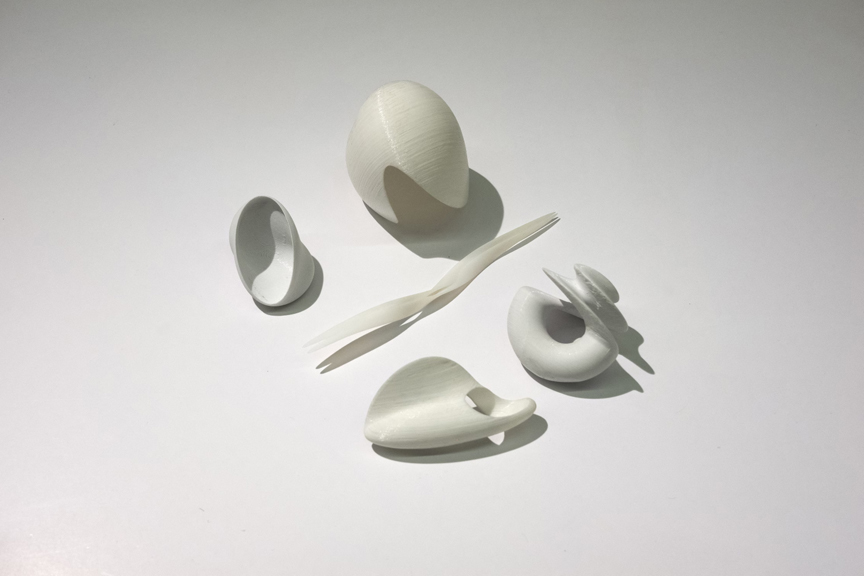
The way we use cooking tools and eating utensils influences how we approach food culture both economically and socially. The traditional European table setting which include fork, knife and spoon are based on etiquette and table manners. Eating is a physical need, and meals are a social ritual, therefore we conform to unspoken rules.
However, when a tool is not an easily understood shape or a common form, is the experience of food altered?
Between art and everyday life a blurry boundary exists. I am investigating whether a new combination of objects’ forms can lead to new culinary objects that produce new uses. I created a design intervention that stimulates people’s curiosity about the objects and challenge users’ imagination in response to the objects’ forms.
. . . . . . . . . . . . . . . . . . .